Harold Davis's Blog, page 184
April 20, 2014
Selective Sharpening with LAB Color Webinar
Have you ever over-sharpened an image? (We all have!) Have you ever wanted to to sharpen just one thing in a photo, not the entire image?
If you answer “Yes!” to either of these questions, then this webinar is for you!
The internal structure of LAB color makes it ideal for attractive sharpening (without over-sharpening) in Photoshop. This is because you can work on the luminance information, avoiding the unattractive results that can happen when color data is sharpened.
This webinar shows how to use the properties of LAB color to selectively sharpen images for aesthetic effect, and teaches you a technique that should be in the toolkit of every photographer who uses Photoshop. Click here to register for the webinar.
Master photographer and bestselling author Harold Davis says, “I use selective sharpening with LAB color to enhance almost all of my photos.” Sharpening with LAB is one of the true secrets of the masters.
The Selective Sharpening with LAB Color with Harold Davis webinar covers:
Different kinds of sharpening
Using selective sharpening for artistic emphasis
LAB color theory and relative gamut
Understanding the color opponent model
Converting to LAB in Photoshop
Choosing the L-channel in Photoshop
Using the Unsharp Mask Filter
Selectively painting in sharp areas
Converting back to RGB
When: The live webinar session will take place on Saturday, May 24, 2014, starting at 3PM PT. The webinar is scheduled for one hour, with additional time for Q&A. The session will be recorded, and you can review the recording at your convenience.
Prerequisite: Basic knowledge of Photoshop.
Where: At your computer, anywhere.
Cost: The registration fee for the live webinar is $29.95. This includes access to the recording of the webinar session. The cost for access to the webinar recording alone (this will be available after the session) is $19.95.
Registration: Registration for the Selective Sharpening with LAB Color with Harold Davis is limited to 20 participants. Click here to register for the webinar. Seats are very limited, so register now to avoid disappointment.
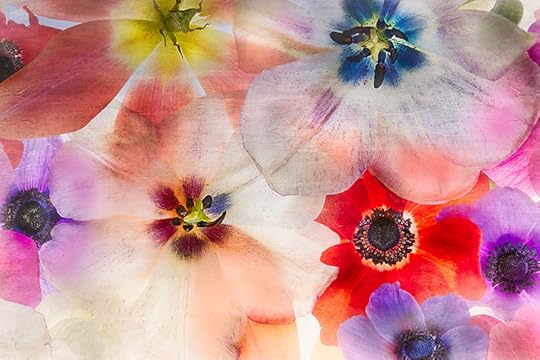
Nature’s Palette © Harold Davis
To emphasize the distinction between the flower core and the petals in Nature’s Palette (shown above) I used LAB color and masking to selectively sharpen the flower centers. This is a relatively subtle technique, in the sense that the viewer is not necessarily aware that I have increased the “sharpness differential” between the two types of subject matter.
Related webinars:
2014.05.24—Selective Sharpening with LAB Color Webinar with Harold Davis. Click here for information and here to register. There is a nominal charge.
2014.05.29—Using Backgrounds and Textures with Harold Davis. Click here for information and here to register. There is a nominal charge.
2014.05.31—Painting in Transparency Using a High-Key Layer Stack Webinar with Harold Davis. Click here for information and here to register.

April 19, 2014
Abroad at Home
Photographing with a group at Kirby Cove waiting for the full moon to rise behind the Golden Gate Bridge, it seemed to me that I live in one of the most beautiful areas in the world. Wherever I travel, for beauty it is a hard comparison with the San Francisco Bay area—and yet, part of the trick is to look at what is near at hand with the same wonder and curiosity that we automatically give to destinations that are more distant.
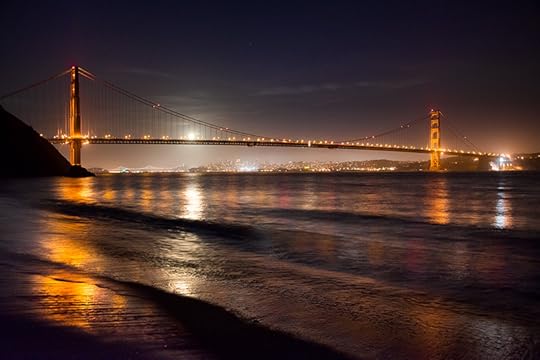
Full Moon Rising © Harold Davis

April 18, 2014
Isuien Garden
Gardens in Japan are almost never just about nature. The key point in a Japanese garden is how the natural elements interact with structural and human elements.
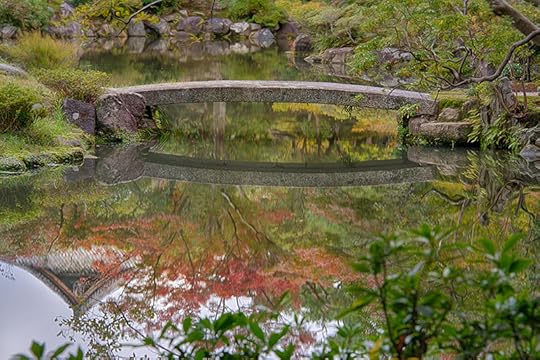
Isuien Garden, Nara, Japan © Harold Davis
The style of Isuien Garden in Nara is specifically to use extrinsic elements—landscapes and structures that are outside the domain of the garden—to enhance the garden itself. My image echoes this stylistic idea by including only the reflection of the temple in the pond, in addition to the stone footbridge and natural reflections.

April 17, 2014
Harold Davis Portfolios—current availability
I wanted to post current information about our portfolios: Botanique, Monochromatic Visions and Following the Kumano kodo. I am very excited that both Botanique and Monochromatic Visions were featured in Fine Art Printer Magazine.
We’ve sold through number 15 of Botanique, which combines aspects of a handmade artist book with some of the features of a portfolio. This is my most successful portfolio to date! The remaining copies, numbers 16-25 are available, at prices starting at $1,950. Click here for more information about Botanique.
A signed print of my Red Poppies, suitable for framing, comes as part of our Botanique presentation, so you have something to put on your walls as well as a portfolio to treasure:
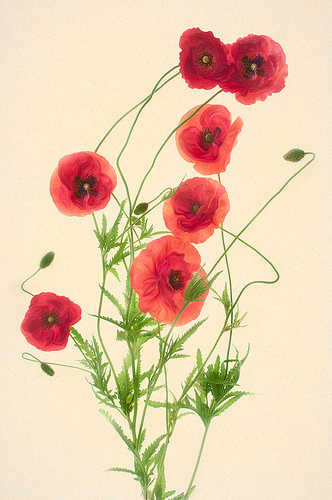
Red Poppies © Harold Davis
Copies of Monochromatic Visions (numbers 4-12) are available, with current pricing at $1,200. Click here for more information about Monochromatic Visions.
Here are the images in the Monochromatic Visisons portfolio:
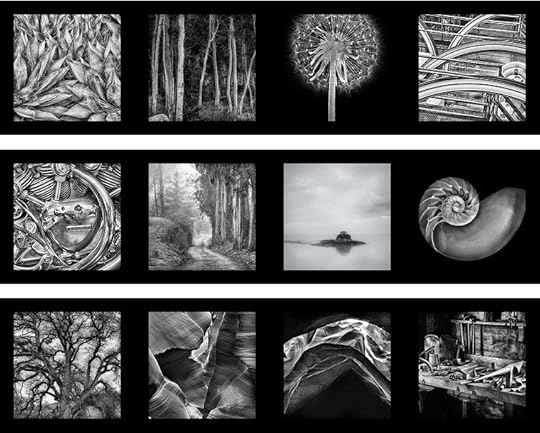
Monochromatic Visions portfolio by Harold Davis
We are working on a Japanese Kumano kodo portfolio, promised to several advance purchasers following my return from Japan. If you are interested in an advance copy of this portfolio, we have one copy available for $650.00. The post-production price for numbers 4-6 will rise to $1,300. Please click here to see some of my stories and photos from Japan. Here’s an image from the portfolio:

Temples at Nachi-san © Harold Davis
Please feel free to contact me if you have any questions, or are interested in one of my portfolios or one of the prints made in my studio!

April 15, 2014
April 10, 2014
Solar Flare
Rain in California this spring has been sorely needed. It has fallen intermittently and blessedly heavy at times—but never enough to stop the drought or replenish the reservoirs. After one such downpour, I went out with my camera searching for waterdrops.
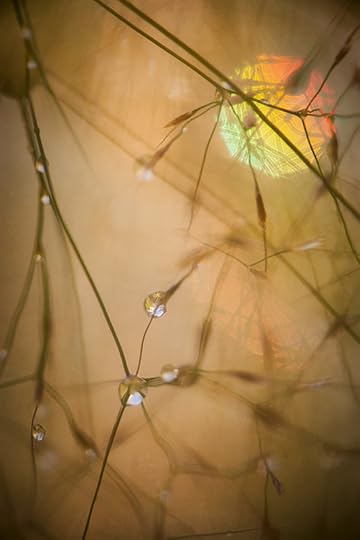
Solar Flare © Harold Davis
It was late afternoon, and the rain had stopped. The setting sun turned drops of water to natural jewelry. I crossed the street, and positioned my tripod near a large and wet patch of decorative grasses. The sun was low in the sky and reflected off some of the grasses. To the extent that I focused close, the reflection of the sun was refracted by the diaphragm blades within the lens. The closer I focused, the larger the solar refraction.
If you look at the image, you can see that I focused on the tiny drop of water in the mid-to-lower left, and that the “solar flare” of refracted sunlight shows the polygonal shape of the opening within my macro lens.
To see more of my photography of natural waterdrops, please check out my book Photographing Waterdrops: Exploring Macro World with Harold Davis (Focal Press).
Exposure data: Nikon D800, 200mm f/4 Nikkor macro lens, 36mm extension tube, +4 close-up filter, 1/400 of a second at f/5.6 and ISO 400, tripod mounted.

April 9, 2014
Using Light for Emotional Impact
Photography is the art and craft of capturing light, whether via silver halide chemistry on film, or via silicon on a sensor array. “Capturing light” is probably the key part of this definition: unlike the popular perception that we photograph people or things, it is impossible to actually render anything in the absence of light. All we can capture is light emitted or reflected (mostly reflected) by our photographic subject matter.
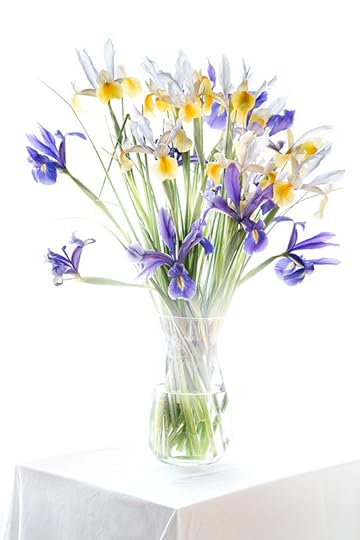
Irises in a Vase © Harold Davis
Why do we care about a photo? Generally because it stirs our emotions. Emotions can be stirred for many reasons, and due to many associations (Marcel Proust’s account of emotional reminiscence stirred by an odor comes to mind). An emotionally resonant image that is technically imperfect will trump a technically perfect but banal image any time.

Boathouse Still Life © Harold Davis
Leaving aside imagery where the pure storytelling packs a wallop, powerful photos use light emotionally. Even graphic human interest photos are more powerful when they use light to their advantage. To summarize, we capture light not things. Emotional resonance is what matters in imagery. Therefore, powerful images manage to use light to convey an emotional response in the viewer. What should your take-away from this syllogism be? I think there are three simple conclusions that all good photographers recognize as guiding principles, and strive to master:
If you want to be a better photographer, train yourself to see light and not objects.
Light inspires, directs and misdirects when it is captured as the incredible force it is. Use all of this in your work: the force, the power, the inspiration, the direction and the misdirection.
Uniform and moderate light is rarely as interesting as strong lighting. Think of it this way: without evil for comparison, how do we know what “good” is? Light is the same way. You often can’t really see it unless there is also darkness.
In my high-key image of Irises in a Vase (shown far above) I purposely created a highly artificial construct of light that seems almost blinding—and therefore obscures details. This image does not look the way it would be rendered in a single accurate capture, but is more emotionally compelling because the apparently overwhelming light has left only the painterly details, with enough visual clues for the viewer to interpolate the rest. With Boathouse Still Life (above) the emotional appeal is achieved because of the partial illumination. In a generally low-key image, the composition with nautical rope behind it is lit by an apparently momentary shaft of light.

Story of O © Harold Davis
In Story of O (above) the action is in the gradation of light, from the light gray in the distance to the darker gray in the foreground, and the contrast with the black outlined shape. A sense of mystery always adds to the emotional appeal of an image, and the relationship of the background gradient to the “circle” foreground is indeed mysterious, bringing several different kinds of light into play. I like to quote the American poet Randall Jarrell, who once said that “Art being bartender is never drunk.” I take this to mean that my viewers don’t have to know what is going on in an image, and maybe even shouldn’t—but as “bartender” I must. This means first and foremost learning to use and control the emotional impact of light in my imagery. Related stories: More about Story of O; more about Boathouse Still Life. Also check out Becoming a More Creative Photographer (a set of articles with exercises on Photo.net).

Using Light Emotionally
Photography is the art and craft of capturing light, whether via silver halide chemistry on film, or via silicon on a sensor array. “Capturing light” is probably the key part of this definition: unlike the popular perception that we photograph people or things, it is impossible to actually render anything in the absence of light. All we can capture is light emitted or reflected (mostly reflected) by our photographic subject matter.

Irises in a Vase © Harold Davis
Why do we care about a photo? Generally because it stirs our emotions. Emotions can be stirred for many reasons, and due to many associations (Marcel Proust’s account of emotional reminiscence stirred by an odor comes to mind). An emotionally resonant image that is technically imperfect will trump a technically perfect but banal image any time.

Boathouse Still Life © Harold Davis
Leaving aside imagery where the pure storytelling packs a wallop, powerful photos use light emotionally. Even graphic human interest photos are more powerful when they use light to their advantage. To summarize, we capture light not things. Emotional resonance is what matters in imagery. Therefore, powerful images manage to use light to convey an emotional response in the viewer. What should your take-away from this syllogism be? I think there are three simple conclusions that all good photographers recognize as guiding principles, and strive to master:
If you want to be a better photographer, train yourself to see light and not objects.
Light inspires, directs and misdirects when it is captured as the incredible force it is. Use all of this in your work: the force, the power, the inspiration, the direction and the misdirection.
Uniform and moderate light is rarely as interesting as strong lighting. Think of it this way: without evil for comparison, how do we know what “good” is? Light is the same way. You often can’t really see it unless there is also darkness.
In my high-key image of Irises in a Vase (shown far above) I purposely created a highly artificial construct of light that seems almost blinding—and therefore obscures details. This image does not look the way it would be rendered in a single accurate capture, but is more emotionally compelling because the apparently overwhelming light has left only the painterly details, with enough visual clues for the viewer to interpolate the rest. With Boathouse Still Life (above) the emotional appeal is achieved because of the partial illumination. In a generally low-key image, the composition with nautical rope behind it is lit by an apparently momentary shaft of light.

Story of O © Harold Davis
In Story of O (above) the action is in the gradation of light, from the light gray in the distance to the darker gray in the foreground, and the contrast with the black outlined shape. A sense of mystery always adds to the emotional appeal of an image, and the relationship of the background gradient to the “circle” foreground is indeed mysterious, bringing several different kinds of light into play. I like to quote the American poet Randall Jarrell, who once said that “Art being bartender is never drunk.” I take this to mean that my viewers don’t have to know what is going on in an image, and maybe even shouldn’t—but as “bartender” I must. This means first and foremost learning to use and control the emotional impact of light in my imagery. Related stories: More about Story of O; more about Boathouse Still Life. Also check out Becoming a More Creative Photographer (a set of articles with exercises on Photo.net).

April 8, 2014
Looking back and thinking forward
I’ve been looking through my archives from last year in Paris—and finding many images that I want to process! Looking back at the crop from the spring of last year helps me to understand what I did right, and what I didn’t get to do. I am using the inventory to check plan my photography this year. Both the images below are essentially unmodified (other than RAW processing) from the straight shot—these were about being there and getting it right in the exposure, not about post-production.

Paris Carousel © Harold Davis
About the image: I used a moderate wide angle focal length, and stopped down enough (to f/18) to get both the carousel and the Eiffel tower in focus. Since this was at night, a moderately long exposure was required (3 seconds) to be able to stop the lens down and get the depth-of-field I needed.
Exposure data: Nikon D300, 18-200mm lens at 18mm, 3 seconds at f/18 and ISO 200, tripod mounted.

Arc de Triomphe © Harold Davis
About the image: Cars, trucks and busses whiz around the Arc de Triomphe endlessly. I wanted to show these cars as streaks, but with the sunset in the sky there was insufficient light for a long enough exposure. I added a polarizer and a +4 ND filter to cut down the light reaching the sensor so I could adjust the exposure proportionately to allow a longish (30 second) shutter speed.
Exposure data: Nikon D300, 18-200mm lens at 18mm, polarizer and neutral density filter, 30 seconds at f/22 and ISO 100, tripod mounted.

April 7, 2014
Iris Friends
These variegated iris are clearly friends. They look at each other with empathy, tendrils even apparently touching—or at least waving to each other!

Iris Friends © Harold Davis






